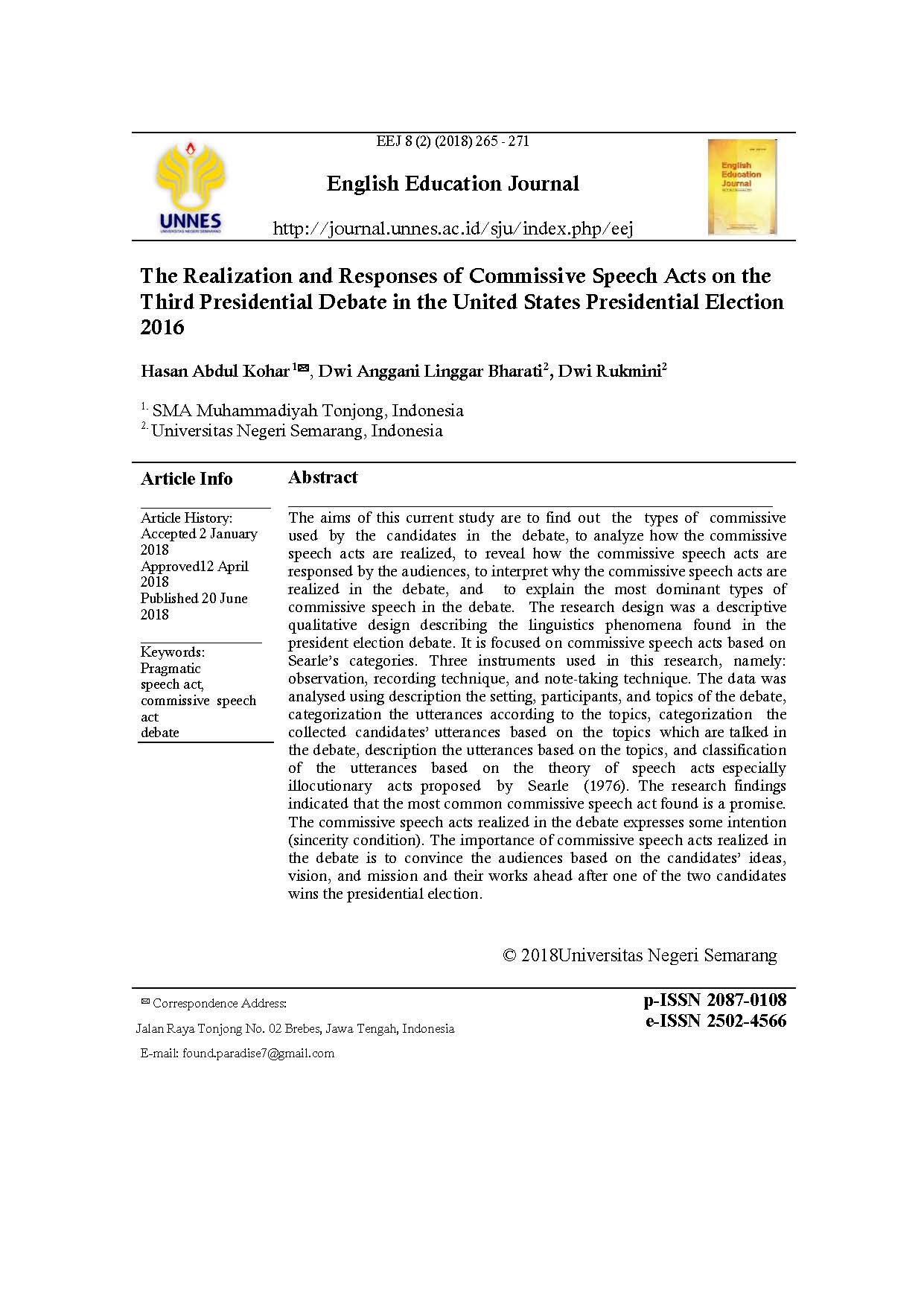The Realization and Responses of Commissive Speech Acts on the Third Presidential Debate in the United States Presidential Election 2016
##plugins.themes.academic_pro.article.main##
Abstract
The aims of this current study are to find out the types of commissive used by the candidates in the debate, to analyze how the commissive speech acts are realized, to reveal how the commissive speech acts are responsed by the audiences, to interpret why the commissive speech acts are realized in the debate, and to explain the most dominant types of commissive speech in the debate. The research design was a descriptive qualitative design describing the linguistics phenomena found in the president election debate. It is focused on commissive speech acts based on Searle’s categories. Three instruments used in this research, namely: observation, recording technique, and note-taking technique. The data was analysed using description the setting, participants, and topics of the debate, categorization the utterances according to the topics, categorization the collected candidates’ utterances based on the topics which are talked in the debate, description the utterances based on the topics, and classification of the utterances based on the theory of speech acts especially illocutionary acts proposed by Searle (1976). The research findings indicated that the most common commissive speech act found is a promise. The commissive speech acts realized in the debate expresses some intention (sincerity condition). The importance of commissive speech acts realized in the debate is to convince the audiences based on the candidates’ ideas, vision, and mission and their works ahead after one of the two candidates wins the presidential election.
